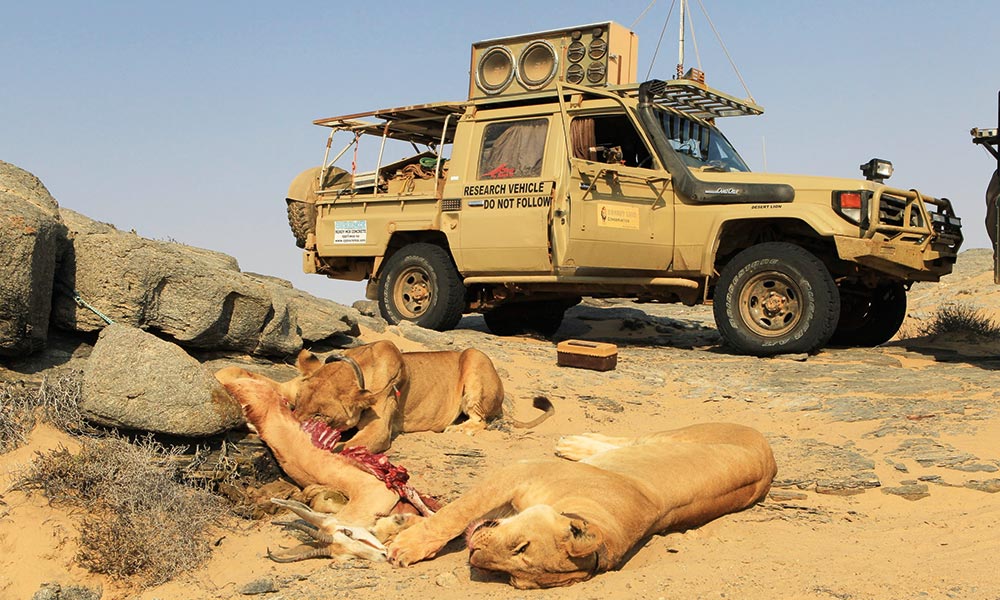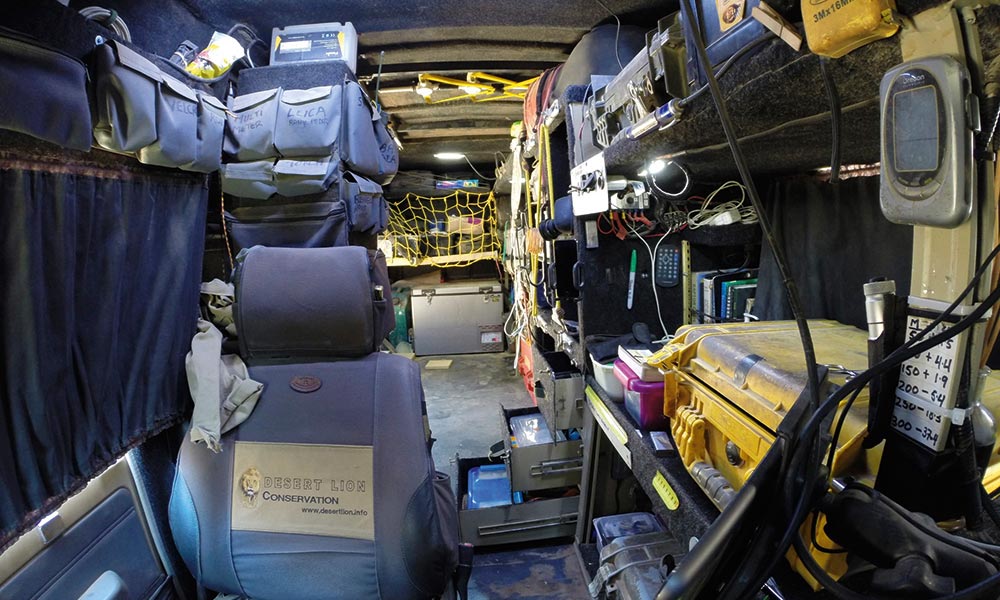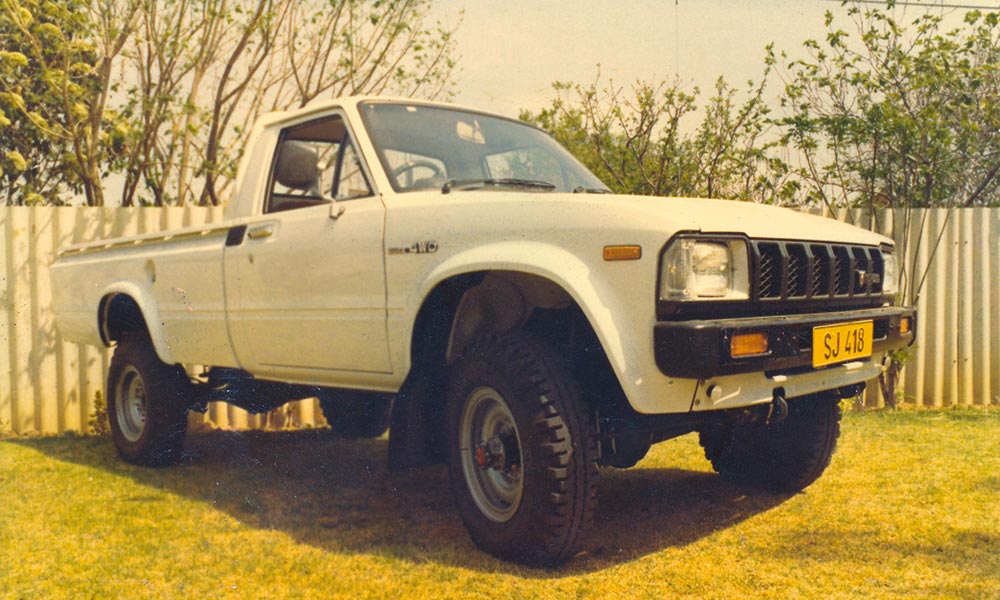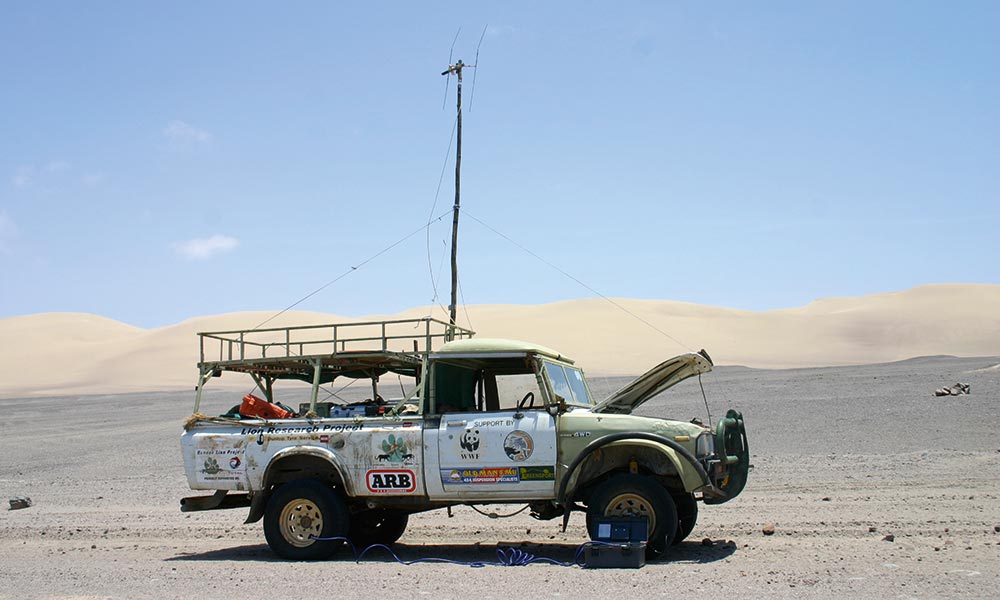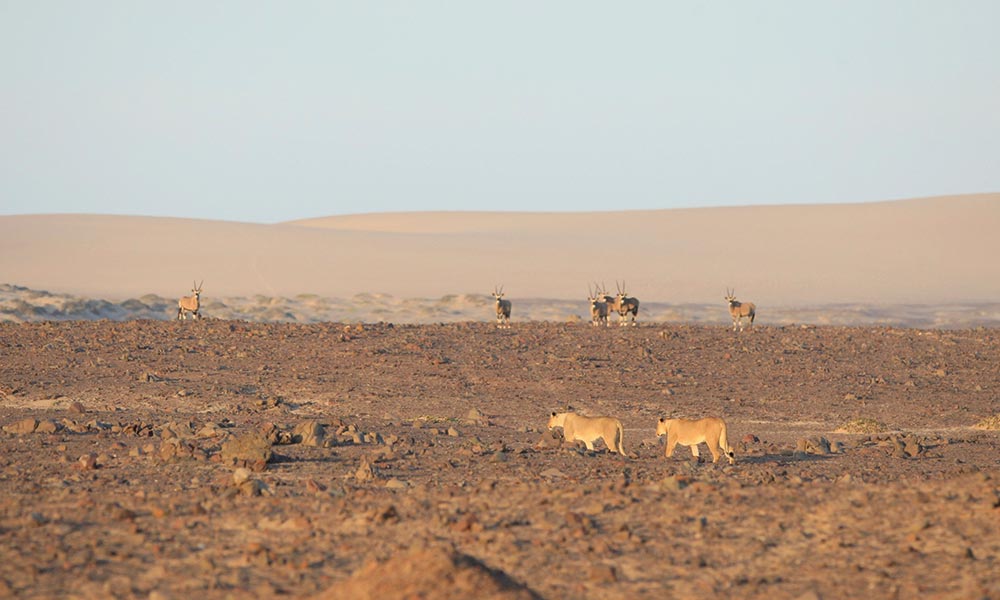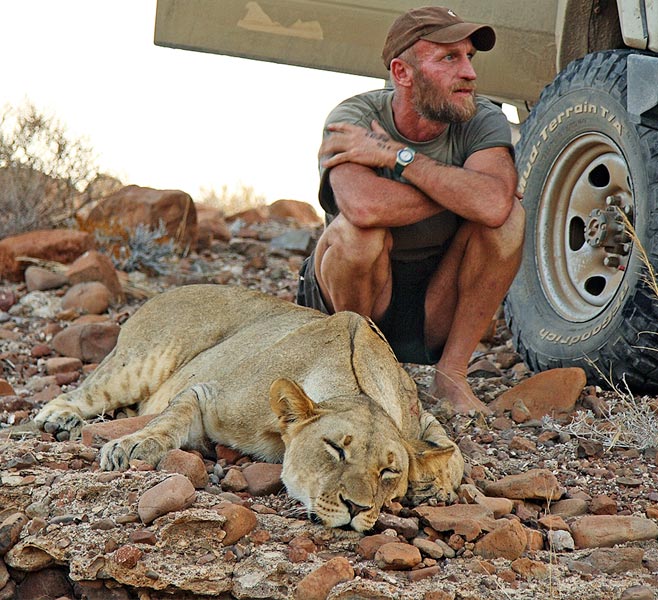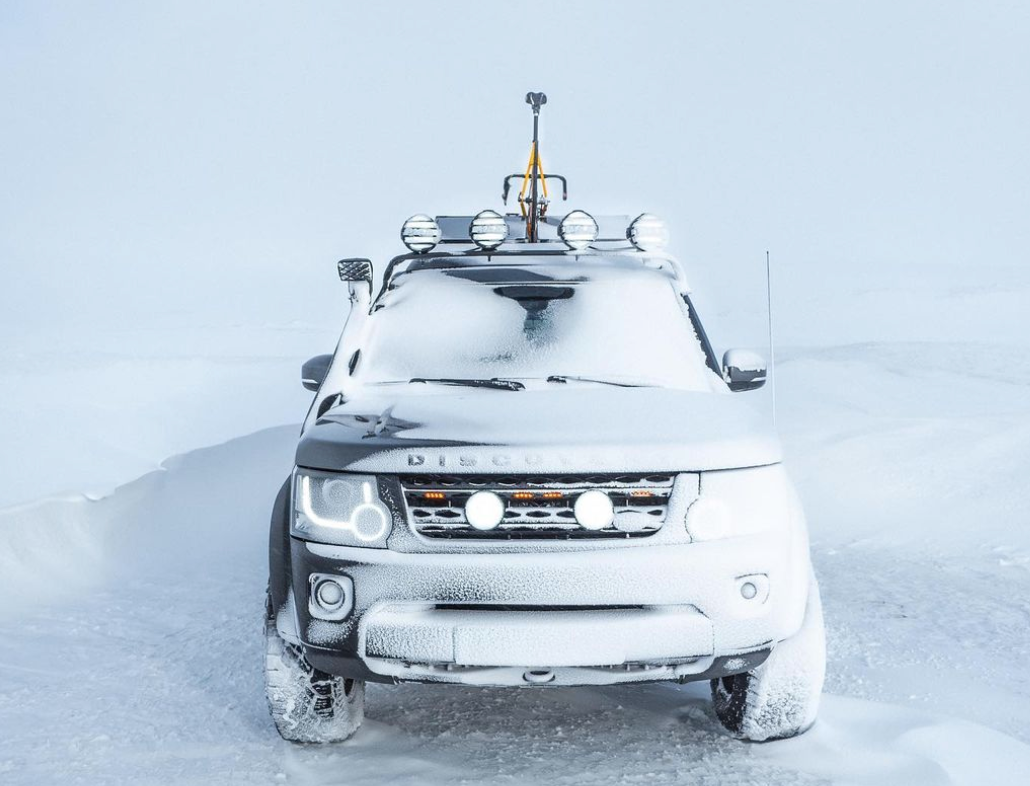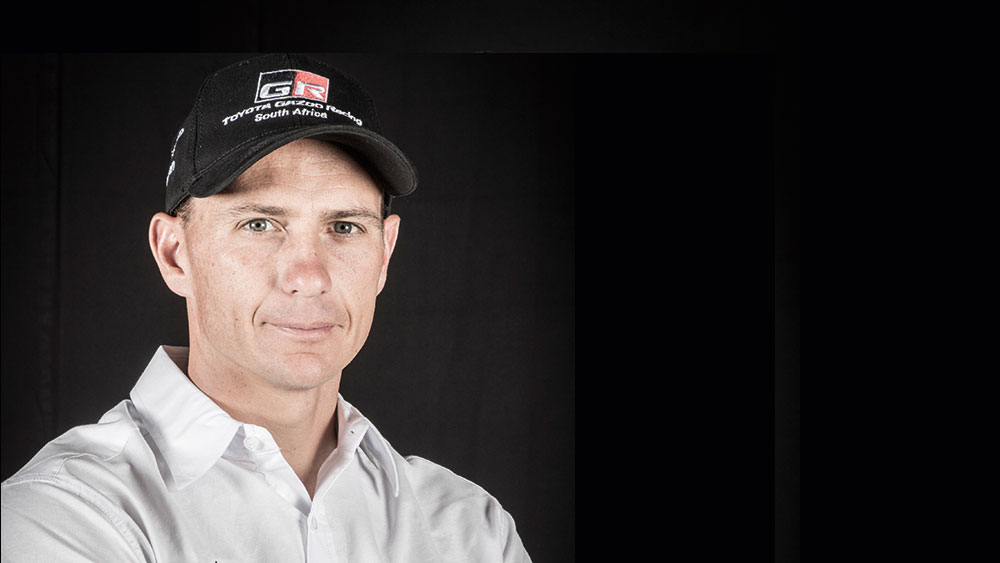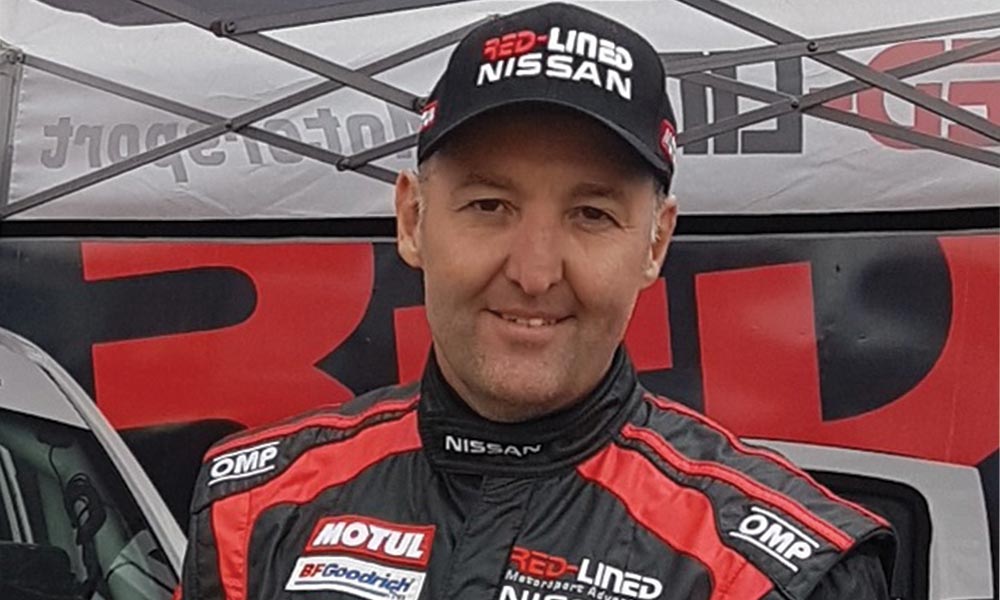He’s been attacked by a grumpy male lion, barely escaping with his life. He’s been attacked in cyber realms by ignorant keyboard warriors questioning his unique approach to conservation. He lives on biltong and biscuits, mostly all by himself, for weeks on end. This is Doctor Flip Stander. The real lion man.
Flip Stander’s working day is very different to most people. He normally catches up on sleep during the day, and works at night. And when we mean work, he tracks lion in the wild Namibian Skeleton Coast. Besides a few close calls with some of the more aggressive big cats, Stander’s big challenge is changing people’s perceptions and fears about the animal. Thing is, the desert lion population, which numbers about 150, is under threat, mostly from humans. Senseless killings of these animals have complicated his work immensely, but the eccentric researcher refuses to give up on his mission. And to think it all began decades ago when he saw a lion feed on a seal carcass. We spoke to the legendary conservationist.
In what car did you learn to drive, and what was your first car? The first car I learnt to drive was a Nissan 1 200 bakkie. In 1983, I had saved enough money for a deposit and bought a Toyota Hilux 18R for R9 000. For the next three years, the monthly payment was R250 and my salary as a ranger in Etosha National Park was R295 (for the first few months). The Hilux, named ‘Hagar the Horrible’, had an illustrious career and was my companion in the field for more than 25 years. It logged in excess of 750 000km without any major repairs to the engine.
What is your favourite 4×4 that you’ve owned or driven? Hagar the Hilux, by a long way. But when the Land Cruiser Club of SA donated a Toyota Land Cruiser 4.5 EFI, I stepped into a new realm and regard it as the best vehicle for my work.
How did the Desert Lion Project start? During a visit to the head ranger at Mowe Bay in the Skeleton Coast National Park, I saw a lioness on the beach feeding on a seal. It left such an impression on me that it still drives me today.
You prefer to work alone… why is that? And doesn’t it get lonely or boring? Working alone is the most effective way to study lion in the desert. You make less noise during the long hours of waiting, you can stay out in the desert for longer and you become very focused and in tune with the lions and nature. It does get lonely – but never boring – and soon you become used to it.
What do you eat and drink when you’re in the field? And where and how do you sleep? Eating is a social event, so when I’m alone for long periods, I eat only once a day, or when I’m hungry. Food normally consists of dry stuff like biltong, fruit and biscuits. Because I often work at night, I sleep in the early morning or late afternoons. Normally next to my vehicle in the shade of a rock overhang.
What is the closest call you’ve had with a lion yet? Or other animals? Lion that approached when I was sleeping have surprised me once or twice. But I have learnt to pick better spots to camp. Elephant can be problematic because they move so quietly and sometimes approach my vehicle at night when I’m observing lion. That can be scary.
What are your best and worst moments of the Desert Lion Project? And the big challenges? Best Following and watching the Terrace Male (Xpl-68) discover the Uniab Delta, and walking along the beach (after an absence of lion for more than 20 years). Saddest: Staying with the Queen (Xpl-10) for a week and watching her die of old age (16 years). I’d known her since birth and followed her throughout her entire life. Worst The poisoning of the three Hoaruseb lionesses; the unnecessary shooting of Adolf (Xpl-3); the unnecessary shooting of Rosh (Xpl-73); the wasteful and pointless killing of the Terrace Male; and the unfortunate killings of the Five Musketeers – five males that would have made a big impact on the desert lion future. Human-lion conflict is the biggest threat to the lion population and it is not something that can be changed overnight. The challenge is to stay motivated.
Where do you see this project in say, 10 years from now? Changing the attitudes of people and managing human-lion conflict is an ongoing process. We have to keep chipping away at the problem. In all honesty, I cannot see it changing in my lifetime, but I do believe that the work we do today will provide a strong basis of knowledge and set the stage for the next generation to take it all the way. If money was absolutely no object, and you could pick any vehicle with which to conduct your research, what would it be? Toyota Land Cruiser 4.5 EFI, or similar low-revs-big-torque engine, that is quiet and powerful. Good visibility and space for all the equipment are key elements. To be able to move around and sleep in the vehicle would make a big difference.
And lastly, if Average Joe & Jill want to somehow get involved with your project, how can they do it?
Visit desertlion.info or mail [email protected]
